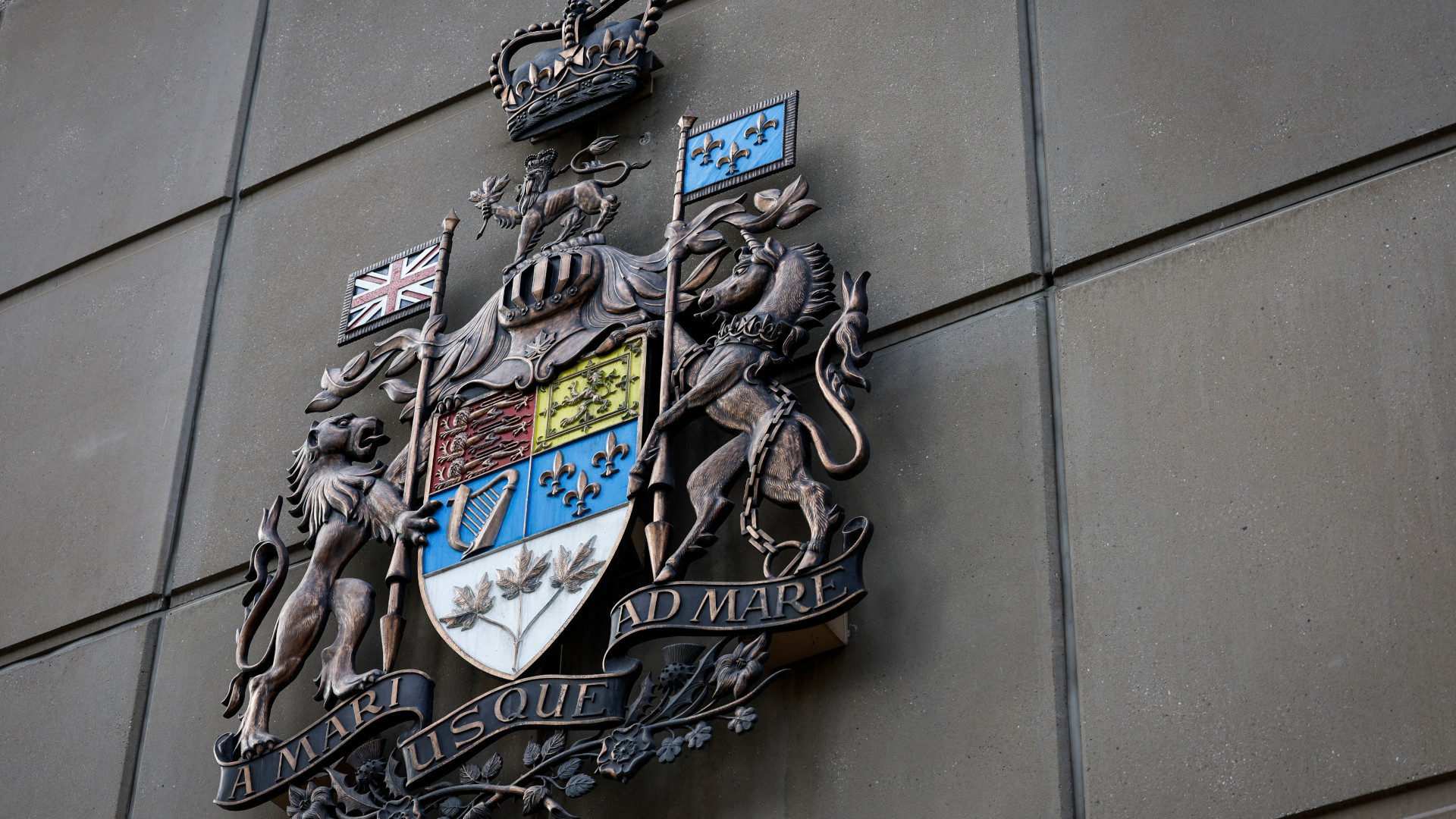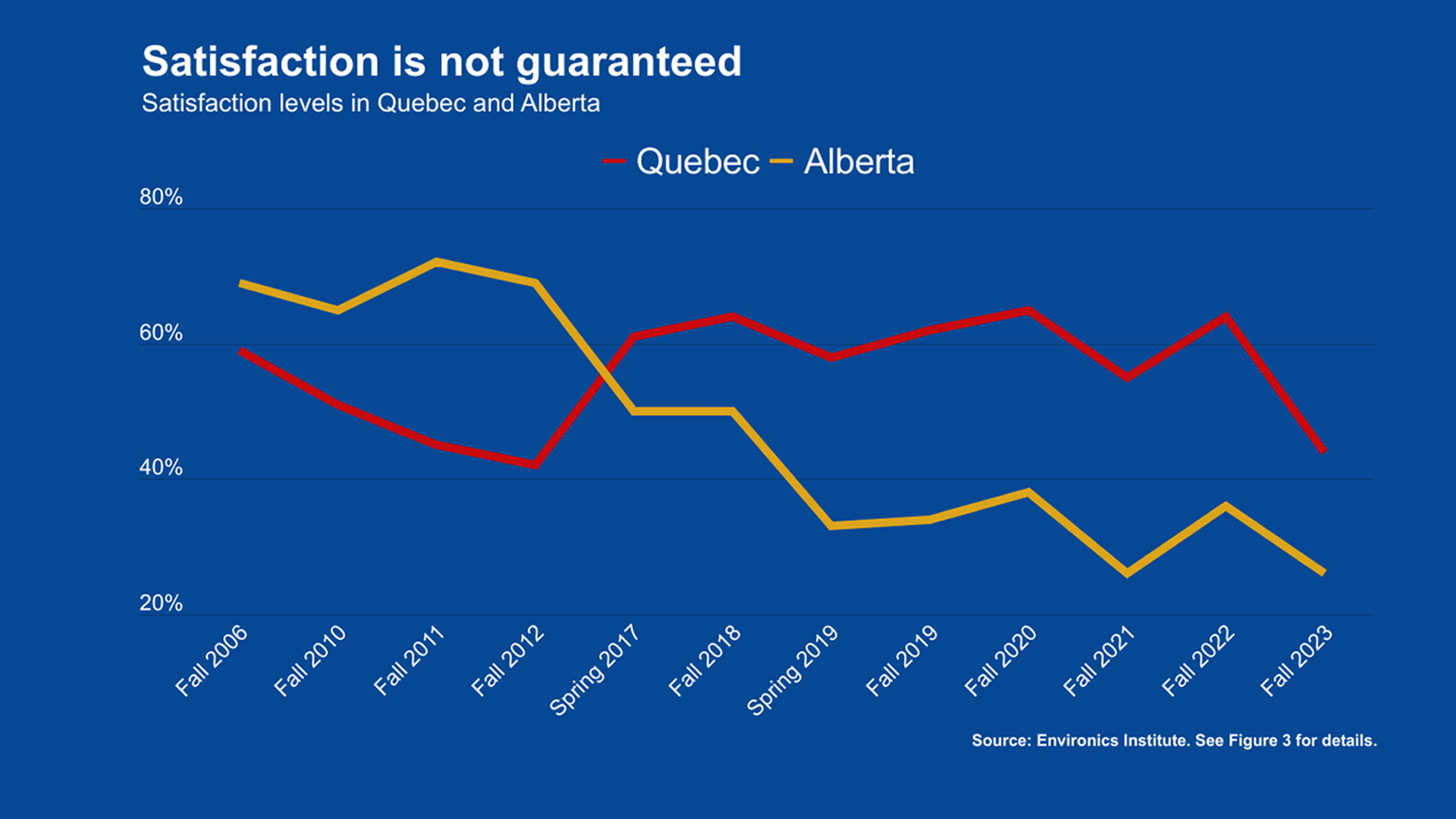
The COVID-19 pandemic was a challenging time. It threatened our lives and our health, upset our jobs and our livelihoods, and distanced us from friends and family.
In the spring of 2020, it would have been reasonable to expect that this would have an immediate and profoundly negative effect on the public mood, but that things would rebound quickly once the emergency passed.
One of the most curious features of Canadian politics over the past four years is that the exact opposite has happened.
In a series of surveys over the past decade, the Environics Institute has asked Canadians a simple question: Overall, are you satisfied or dissatisfied with the way things are going in our country today?
Their answers tell several important stories, including about how difficult people have found things in 2023.
The overall pattern is clear. Satisfaction was declining in the spring of 2019, prior to the pandemic, as the federal government hit some bumps in the road and began to shed cabinet ministers. It rebounded somewhat later that year, in time for the fall election.
But by the end of 2020, despite the arrival of COVID-19 earlier that year, satisfaction had jumped again to reach 58 per cent (see Figure 1). A second series of Environics surveys confirmed this higher level of satisfaction continued into the first half of 2021.
Certainly, the pandemic was a trying time, but public satisfaction improved as we navigated the initial waves and especially as vaccines became widely available. There was also a bump in trust in government, but it didn’t last
The Omicron wave, arriving later in 2021, was a major setback. But most importantly, when COVID-19 finally dropped off the list of top concerns in 2022 and 2023, it was replaced by worry about the economy, inflation, and the cost and availability of housing.
We forgot to build back better. These concerns drove a further 13-percentage-point drop in satisfaction between fall 2022 and fall 2023. A majority of Canadians (58 per cent) are now dissatisfied with the direction of the country. Satisfaction has fallen across all age groups.
While younger adults (age 18 to 29) remain somewhat more satisfied than their older counterparts, they have experienced the biggest drop – to only 40 per cent today from a peak of 72 per cent in 2017. Much of that drop occurred between 2020 and 2021 as the pandemic lingered.
Older Canadians (age 60 and above) responded more positively during the first stages of the pandemic in 2020, but that improvement proved short-lived. Today, only 33 per cent of them feel satisfied (see Figure 2).
Satisfaction is also down in each region across the country, but there are some notable variations over both the longer and shorter terms.
Over the longer term, the most striking development has been the reversal of fortunes in Alberta and Quebec. A decade ago, Alberta was the most satisfied region in the country and Quebec the least.
Now, the opposite is true – even though satisfaction declined in Quebec as elsewhere over the past year (see Figure 3). Only 26 per cent of Albertans said in the fall 2023 survey that they are satisfied, compared with 44 per cent of Quebecers.
Even with this most recent decline, the proportion of Quebecers who are satisfied with the way things are going in our country in 2023 is more or less the same as it was at the start of the 2010s. But compared to that earlier time, the proportion of Albertans who are satisfied in 2023 is dramatically lower.
Over the shorter term, however, one of the most significant turnarounds is in Atlantic Canada where the proportion who are satisfied with the way things are going in the country was cut in half between 2020 and 2023, to 29 per cent from 61 per cent (see Figure 4).
Atlantic Canadians are now tied with Albertans for the highest level of dissatisfaction and seem set on breaking up Alberta’s recent monopoly on feelings of regional alienation.
On the political front, the differences among groups of partisans seem hardly surprising at first glance. With each passing year in opposition, supporters of the Conservative Party grow a little less satisfied with how things are going.
But the fall 2023 survey nonetheless captures an important change. Satisfaction dropped sharply among Liberal and NDP supporters as well. This is more bad news for the government. Not only do fewer people intend to vote Liberal – as opinion polls tell us – but even among the remaining group who do, the mood has soured (see Figure 5).
Is there no good news in these numbers? We can still console ourselves by pointing to the United States. Over the past few years, levels of satisfaction in the U.S. have been much lower than in Canada (see Figure 6).
The trend in Canada is not encouraging, but it could be a lot worse.
Methodology note: The Canadian data presented in this article are from the Environics Institute’s Focus Canada surveys. The most recent surveys in the series were conducted by the Environics Institute in partnership with Century Initiative. These surveys are based on telephone interviews typically conducted with 2,000 Canadians. A sample of this size drawn from the population produces results accurate within plus or minus 2.2 percentage points in 19 out of 20 samples.








